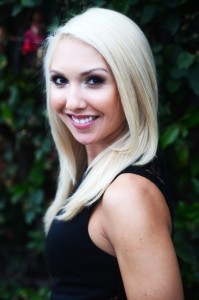Contributor: Rachael Mattice is the Content Writer Team Lead for Sovereign Health Group
 Addiction is sneaky, and mental health disorders can be stealthy. When these conditions occur in tandem the end result is often surprising and unexpected.
Addiction is sneaky, and mental health disorders can be stealthy. When these conditions occur in tandem the end result is often surprising and unexpected.
Suffering the annual winter blues is handily offset by a couple of cocktails, right? In reality, the net result of self-medicating the blues away with alcohol can be a full blown addiction.
Seasonal Affective Disorder
According to the DSM-5, SAD is a subtype of a major depressive or bipolar disorder. The symptoms for diagnosing depression with a seasonal pattern include having the following experiences for at least two consecutive years:
- Depression that begins during a specific season every year
- Depression that ends during a specific season every year
- No episodes of depression during the season in which you experience a normal mood
- Many more seasons of depression than seasons without depression over the lifetime of the illness
Symptoms of SAD
Seasonal affective disorder, or SAD, is characterized by unrelenting symptoms of depression that usually coincide with the fall and winter months, although a variant can also present in spring and summer.
For individuals who experience the syndrome in the spring and summer months, the symptoms are somewhat different. Although they too experience symptoms of depression, they also experience:
- Insomnia
- Anxiety
- Irritability
- Decreased Appetite
- Social Withdrawal
- Weight Gain or Loss
- Decreased Sex Drive
Symptoms of SAD may include:
- Lack of Energy
- Withdrawal From Friends and Family
- Decreased Interest in Sex
- Tendency to Oversleep and Overeat
- Nausea
- Difficulty Concentrating
These symptoms can culminate in pessimism, hopelessness and sadness, and even thoughts of death or suicide.
The Alcohol Factor
Alcohol abuse comorbidity is common among those suffering from intense seasonal affective disorder, as it is with all major depressive events. Both genetic and environmental factors play a role in the development of alcoholism in conjunction with SAD. Some genetic studies suggest a link between season depression and alcoholism.
Environmental Effects
 SAD rates are highest in the regions furthest from the equator, with rates in Finland at 9.5 percent of the population, 20 percent in Ireland, 8.9 percent in Alaska, and 10% in the Netherlands, for example.
SAD rates are highest in the regions furthest from the equator, with rates in Finland at 9.5 percent of the population, 20 percent in Ireland, 8.9 percent in Alaska, and 10% in the Netherlands, for example.
Interestingly, Iceland seems to be an exception in the Nordic regions, with a very low prevalence of SAD. In the Canadian population that is primarily Icelandic genetically, there are also very low rates of SAD, suggesting that something inherent to the Icelandic people, such as high intakes of fish in the diet, may offset the syndrome.
"Light" is the Key
Research on SAD began in the United States in 1979 by Herb Kern. A research engineer who noticed he felt depressed during the winter months, Kern suspected the problem was caused by diminished daylight during these months.
He presented the idea to scientists at the National Institute for Mental Health (NIMH) who, after studying the syndrome, devised a light box to help Kern with his depression. After a few days of treatment, his symptoms began to abate, as did other patients who also utilized the device.

The First Formal Study
In 1984, Norman E. Rosenthal, M.D. and his associates at the NIMH, undertook the first formal study, again motivated by Rosenthal’s personal wintertime depression. He theorized that the reduction in natural light during the winter months was the cause of the depression.
After documenting the placebo-controlled study results where light therapy was used, the findings were published. A subsequent book, authored by Rosenthal in 1993 entitled Winter Blues, became the standard introduction to the subject in professional circles.
Diagnosing and Treating SAD
In diagnosing SAD, a good clinical interview is the most effective tool. In addition, an assessment has been designed specifically for SAD, called Seasonal Pattern Assessment Questionnaire (SPAQ).
Professional treatment for SAD is threefold:
- Light Therapy
- Light therapy, or phototherapy, involves seating the patient a couple of feet from a special light therapy box, exposing the patient to specific doses of light that mimics natural outdoor light, emitting excessive lumens. One study , however, suggests that the blue light often used for SAD treatment be replaced by a green or white illumination for better results.
- Medication
- Medication is effective in combination with both the light therapy and traditional therapy, with SSRIs being the most effective drug category.
- Therapy
- Cognitive Behavioral Psychotherapy
Treating Co-occurring Alcohol Abuse
The alcohol abuse component must also be managed once it has been identified, with referral to a treatment center for inpatient or outpatient treatment therapies, depending on the severity of the alcohol abuse. Often, involvement in a 12 step program will help both the alcoholism and, through the benefits of fellowship in A.A., the depression component.
Community Discussion – Share your thoughts here!
Are you someone who has suffered from the seasonal blues and utilized alcohol to curb those feelings? What tools have you found to help with the blues?
About the author:
Rachael Mattice is the Content Writer Team Lead for Sovereign Health Group, an addiction, mental health and dual diagnosis treatment provider. Rachael is a creative and versatile journalist and digital marketing specialist with an extensive writing and editing background.
Her portfolio includes numerous quality articles on various topics published in print and digital formats at award-winning publications and websites.
To learn more about Sovereign Health Group’s mental health treatment programs and read patient reviews, visit http://www.sovhealth.com/.
The opinions and views of our guest contributors are shared to provide a broad perspective of addiction. These are not necessarily the views of Addiction Hope, but an effort to offer discussion of various issues by different concerned individuals.
Last Updated & Reviewed By: Jacquelyn Ekern, MS, LPC on February 18th, 2015
Published on AddictionHope.com
